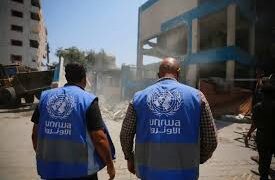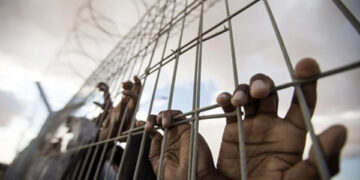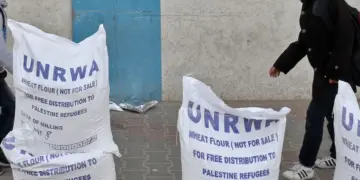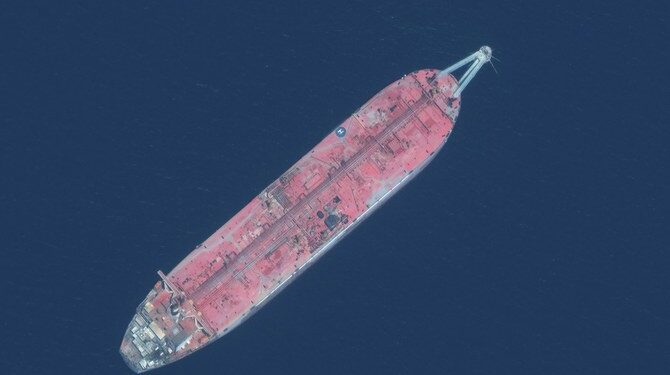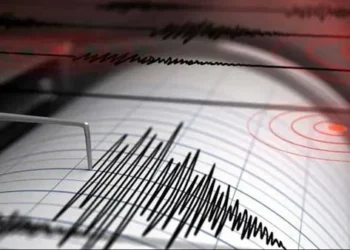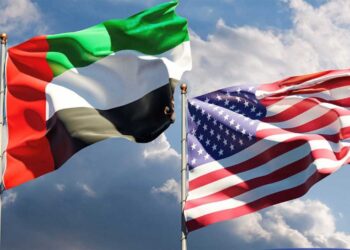UN launches an online campaign to close funding gap for safer rescue work
The ship, which holds 48 million gallons of oil, has been docked off the west coast of Yemen since the country’s war began seven years ago. It had little or no maintenance during that time and its condition has deteriorated, raising growing fears that a disaster is imminent that could cause the world’s fifth largest oil spill from an oil tanker.
The United Nations is seeking $ 144 million in donations to finance the operation to make it safe, of which $ 80 million will be used to transfer the oil to another ship.
“Following Saudi Arabia’s announcement of a $ 10 million commitment on June 12 and the announcement that the United States is working towards a $ 10 million grant, we now have three quarters of the $ 80 million needed to start the emergency phase of the operation “, UN spokesman Stephane Dujarric said.
David Gressly, humanitarian coordinator and UN resident for Yemen, announced the fundraiser in a message posted on his Twitter account. He said the goal is to raise $ 5 million by June 30 so that work on the ship can begin in July.
The Safer, a floating storage and unloading terminal, is anchored near the Yemeni port of Hodeidah. The ship’s rusted hull, equipment, and systems have deteriorated so badly that there are growing fears that it could leak, catch fire or even explode, potentially causing an environmental disaster four times worse than the Exxon Valdez spill off the coast of Australia. Alaska in 1989, which remains the worst in the world in terms of environmental damage.
Since 2019, the United Nations has asked the Houthis to allow a team of experts to access the ship, assess its condition and conduct emergency repairs, warning that a leak would destroy many Yemenis’ livelihoods, damage marine life and disrupt deliveries of aid. It could also disrupt commercial shipping in the Red Sea, which is one of the busiest waterways in the world and accounts for 10% of global trade.
Other countries along its coast could also be affected, including Saudi Arabia, Djibouti and Eritrea. In November last year, the Houthis agreed to grant access to the ship.
Earlier this month, Linda Thomas-Greenfield, US Permanent Representative to the United Nations, said, “We know what the consequences are, we know the danger there is, and we have encouraged others to help fund this effort.
“But let it be clear that the problem with the Safer is the Houthis, who have not even allowed the UN or anyone else (to access the ship and inspect it).”
He said the ultimate responsibility falls on the militia because: “We can get all the money in the world and if they don’t allow access, we’re still where we started. So it’s a two-pronged effort to achieve this.”
Asked by Arab News whether or not he feels confident that the Houthis will keep their deal to allow UN experts to board the ship, Dujarric said: “In Yemen, like everywhere in the world, let’s take things one day. at a time.
“But our understanding is that yes, we will have access to the ship, which is critical for us to avoid what we fear would be an ecological disaster.”
Meanwhile, Hans Grundberg, the UN special envoy to Yemen, said he expected an imminent response from the Houthis to a proposal for the gradual reopening of key roads in Taiz and other governorates.
“The UN proposal takes into account various concerns expressed by both sides during discussions that began in the Jordanian capital, Amman, last month,” Dujarric said.
The Taiz governorate has been under siege since 2015, when the Houthis closed main roads and surrounded the city center, cutting it largely out of the rest of the country. The siege continues despite the recent extension of a truce between the militia and government forces.
“As with all elements of the truce, the opening of the roads is a measure to alleviate the suffering of Yemenis, as well as to create a sense of normalization and facilitate freedom of movement for Yemeni civilians,” Grundberg said.


